Ever paused mid-scroll for a crisp title reveal, a logo that seems to bloom into place, or icons that glide to clarify a feature in seconds? That pull is motion graphics at work. At its core, this craft takes the basics of graphic design type, color, shapes, layout and orchestrates them over time so information lands faster and sticks longer.
As you read through this guide, you’ll get a simple motion design explanation, see where the format shines, pick up fundamentals, and leave with a repeatable workflow for your first 10–15 second piece.
What Are Motion Graphics?
In simple words: it’s graphic design in motion, built to communicate quickly. Rather than character arcs or long narrative scenes, you’re animating designed elements so the viewer’s eye goes exactly where you want, in the order you intend. The best work feels invisible: timing is natural, hierarchy is clear, and the takeaway is obvious in under 20 seconds.
Two practical implications flow from that:
- Short form is a feature, not a bug. Social cuts are often 6–20 seconds; landing-page explainer videos may run 15–45 seconds. Tight timeboxes force clarity: one idea per beat.
- Systems beat one-offs. Because the pieces are designed, you can templatize scenes (intro, callout, lower third, outro) and scale a campaign fast without starting from zero.
What Are Motion Graphics Used For?
Motion Graphics is the go-to for turning information into action. It is used everywhere you need clarity and momentum:
- Marketing & performance: Hook → benefit → call-to-action. When you test animated typographic stings or simple infographic reveals against still images, the lift in attention and recall often explains this is why motion graphics beat static ads for many teams.
- Product & UX: Micro-demos of app flows, masked reveals for features, and onboarding steps that teach through movement.
- Education & news: Animating charts, maps, and timelines so patterns become obvious at a glance.
- Branding & events: Logo stings, lower thirds, title sequences, and animated iconography for webinars, livestreams, and conferences.
- Web & signage: Hero headers, subtle UI transitions, and digital billboards that cycle messages without feeling chaotic.
For founders and product teams, the role of motion graphics in tech startups is to compress complex concepts APIs, data flows, onboarding steps into short, persuasive visuals that speed understanding and improve activation across sites, decks, and paid media.
Examples of Motion Graphics
- Classic title sequences: Minimal geometry and rhythmically timed type that establish tone, genre, and mood in seconds.
- Map-driven openers: Camera-like pans, zooms, and labels that situate the audience before a story unfolds.
- Alphabetic mini-histories & TED-style explainers: Letter-by-letter conceits or clean iconography paired with narration to teach without overwhelming.
- Product teasers and social promos: Bold kinetic type, tight messaging, and vertical framing for phone-first audiences.
How to Create Motion Graphics
You can finish a professional-looking first piece with a lean toolkit and a simple loop:
- Write the one-liner. Define the outcome: “By the end, the viewer should understand benefit and CTA.”
- Break into beats. 3–5 micro-moments: setup → benefit(s) → CTA. Restrain yourself to one idea per beat.
- Storyboard rough frames. Stick figures are fine. Decide where text sits, where icons enter, and how each beat hands off to the next.
- Gather assets. Vector logo, brand colors, 2–3 icons or illustrations, screenshots or screen recordings, a short music bed.
- Animate the base pass. In your compositor, keyframe only the essentials: entrances/exits, masks, trim paths, and a single transition pattern. Keep it under 15 seconds.
- Polish the timing. Open the graph editor and ease aggressively so nothing moves robotically. Stagger elements; use overlap to guide attention.
- Sound and captions. Balance VO/music/SFX; assume silent autoplay and put key copy on screen.
- Export variants. Vertical for stories/reels, square for feeds, horizontal for sites and decks. Save the project as a starting template so future edits are fast.
- Package for teams. If collaborators will be updating copy or colors, convert repeating scenes into editable templates. This is where custom video animation becomes efficient for ongoing campaigns.
Where tools fit:
- The compositor/animator handles layers, keyframes, masks, and effects.
- A design app supplies clean vectors and layouts.
- A timeline for video editing assembles multiple shots, adds captions, and handles final delivery.
- A lightweight audio tool trims VO and balances music/SFX.
What are the Basics of Motion Graphics
Understanding the motion graphics basics makes things easier to reuse in the future. Think of these as the fundamentals you’ll revisit on every project:
- Timing & spacing: Ease almost everything. The world accelerates and decelerates; your layers should too.
- Hierarchy: Make the first thing obviously first. Scale, contrast, and entry order are your levers.
- Composition: Work on a grid, give text room to breathe, and test legibility on a phone.
- Typography in motion: Chunk lines into short phrases; sync reveals to beats or VO cadence.
- Color & contrast: Brand-true doesn’t mean low-contrast. If the copy isn’t readable, adjust the background or add holds/keys.
- Transitions with intent: Choose two or three patterns (slide, mask, dissolve) and repeat them as a consistent vocabulary.
- Sound design (lightly): Small whooshes and clicks go a long way. Avoid gimmicks; keep it tasteful.
- Plan for reuse: Build a tiny motion system intro bumper, lower third, data callout, testimonial card, outro so you assemble rather than reinvent.
Curious about technique range? On one end you have clean, vector-driven clarity; on the other, tactile approaches like motion graphics animation and stop motion for warmth and craft. Pick what best serves the message.
FAQs.
What’s a realistic starter budget and timeline for a short piece?
For a lean 10–15s explainer with simple type, icons, and light sound design, expect 3–7 production days once the script and assets are locked. Budgets vary by complexity and revision loops, but many teams find a healthy starting range is a few hundred to a few thousand dollars. Scope creep comes from late copy changes freeze messaging early and you’ll save both time and cost.
How do I brief a designer so the first draft is on-target?
Share one sentence for the outcome, three key beats, brand guidelines (fonts, colors, logo), references you like (two styles max), target platform(s), and the CTA. Mention any must-have shots or words to avoid. When you need a hand shaping that into a tight creative brief, the team at AnimatedVideos.co can turn your notes into a production-ready plan within a day, keeping stakeholders aligned.
Which aspect ratios and resolutions should I deliver?
As a default trio: 1080×1920 (vertical), 1080×1080 (square), and 1920×1080 (horizontal). Maintain safe areas for captions and UI on vertical cuts. If web placement is a hero header, confirm dimensions with your dev or CMS; some sites prefer 1600–2000px wide with modest file sizes for performance.
How do I measure whether the piece worked?
Choose one primary metric before production. For ads, track thumb-stop rate, CTR, and cost per result; for product, watch feature activation and support tickets; for brand, look at view-through rate and recall surveys. Tie each beat to a measurable moment hook, value, CTA so edits map cleanly to the data.
What accessibility considerations should I include from the start?
High color contrast, legible type sizes (especially on vertical video), on-screen copy for silent playback, and captions where VO carries meaning. Avoid rapid flashing, keep motion intensity comfortable, and give UI-like moves a natural ease so they’re easy to follow.
What do clients usually say after working with AnimatedVideos.co?
A common user review about hiring animated video agency partners mentions clearer messaging, faster iteration on campaign variants, and better cross-platform performance especially when templates and aspect-ratio masters are included for future use.
When should I mix live action with overlays versus going fully animated?
Use live action + overlays when human credibility or product texture matters interviews, hands-on demos, lifestyle shots. Choose fully animated when abstraction clarifies complex ideas, or when you need rapid iteration across many variants without reshoots.
What legal pitfalls should I avoid (fonts, music, footage)?
Confirm commercial rights on everything: fonts licensed for video, music cleared for the platforms you’ll use (and for paid media if applicable), and stock footage with appropriate usage tiers. Keep license receipts in the project folder and document attributions required by the provider.
How do I scale from one good video to a repeatable content machine?
Standardize a tiny motion system: reusable scenes (intro, callout, testimonial, outro), a short transition vocabulary, tokenized type and spacing, and a naming convention for files. Set a weekly cadence with a backlog of scripts. For teams that want scale without bloat, AnimatedVideos.co builds brand-tight templates so non-animators can update copy safely while keeping design quality consistent.
Bring Your Message to Life with AnimatedVideos.co
Motion graphics turn complex ideas into clear, persuasive moments. With disciplined timing, typography, and composition, they focus attention, convey value in seconds, and create continuity across ads, product pages, and social without adding noise.
For brands that want that standard of clarity and consistency, AnimatedVideos.co provides end-to-end creative: strategy, scripting, design, animation, and platform-ready masters. Share your objectives and timeline; we’ll return a concise treatment and a production plan tailored to your campaign.



